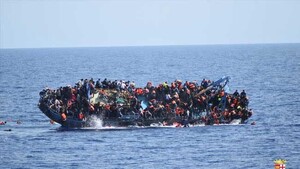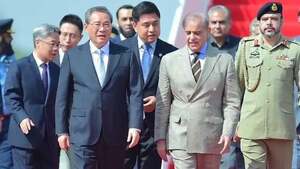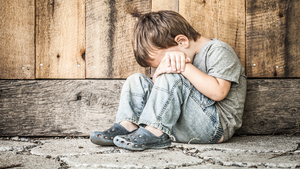There are a few worrisome facts that demonstrate the state’s indifference to the fundamental right of all children to get an education.
Civil society and the media in Pakistan can use this simplified version of George Orwell’s “Animal Farm” sentence to advocate for selected human rights. We can use the phrase “All are equal, but some are more equal than others” to describe the situation.
Despite the United Nations’ repeated emphasis on the inseparability and equal significance of all human rights, civil society and the media in Pakistan tend to prioritize certain rights over others, such as the right to education.
Politicians continuously advocate for civilian dominance, journalists fight for freedom of expression, and gender activists work to empower women, but who will champion the cause of the 25 million children denied their fundamental right to participate in educational opportunities?
Talk shows on political and economic problems, as well as public service messages on climate change and cleanliness, make up a significant portion of the time that media outlets devote to their programming. The education issue that is hurting millions of youngsters, however, is scarcely brought to the attention of the public. Can a country truly achieve development if it fails to educate its children and young people?
Through Article 26 of the Universal Declaration of Human Rights, the United Nations (UN) established that the right to receive an education that is both free and mandatory was a fundamental human right in 1948. The introduction of Article 25-A in 2010, which guaranteed free and compulsory education as a basic right of all children and placed the burden of its provision on the “state,” took Pakistan 62 years to incorporate this right into its constitution.
All children received this guarantee. Despite being in place for thirteen years, the government’s passivity has rendered this legislation largely ineffective.
A failing that ought to be a national disgrace but instead remains under the radar is the fact that almost 25 million children between the ages of five and sixteen are still not attending school. Among these youngsters, 20 million have never set foot inside a classroom.
How can this not be considered a grave violation of Pakistan’s constitution?
Why have human rights organizations and the National Assembly Standing Committee on Human Rights not held any meetings to discuss the current state of implementation of the constitutional right to acquire an education?
This form of neglect stems from a deeply rooted social separation. The urban elite, whose children attend private schools of the highest quality, rarely engage with the public education system’s catastrophe. While they are the dominant force in the national discourse on human rights, they rarely advocate for the right of millions of marginalized people to receive education. Successive governments, both federal and provincial, echo their silence by prioritizing short-term political gains and infrastructure projects over long-term investments in education.
Several troubling facts make it very clear that the state is completely unconcerned with the fundamental right of every child to receive an education. The state has implemented a steady reduction in education financing. Pakistan’s education investment has plummeted from 2.3 percent of GDP in 2015-16 to a startling 1.5 percent in 2023.
This represents a significant percentage decline. Not only does this severe lack of funding demonstrate a lack of political will, but it also demonstrates a clear contempt for the future plans of the nation.
At a time when Pakistan needs to invest in its human capital, the state has opted to forsake its children. This is especially true in the most vulnerable districts of Sindh, Balochistan, southern Punjab, and the combined districts of Khyber Pakhtunkhwa, where more than fifty percent of children continue to be absent from school.
In Sindh, children aged five to sixteen years old make up 46% of the population, while in Balochistan, 58% of children in this age range are not attending school. The findings of an analysis of data from the 2023 Population Census indicate that more than sixty percent of girls are not attending school in 57 districts across the nation. Do the individuals in charge of affairs in Pakistan hear and consider these alarming statistics? Do they have any thoughts or feelings about them?
In Punjab, the province with the most population in the country, the education crisis is glaringly obvious. In spite of the fact that it is home to 31.5 million people who are illiterate and as many as nine million children who are not attending school, Punjab devotes only thirteen percent of its yearly government budget to education, which is the lowest percentage of any province.
Khyber Pakhtunkhwa, on the other hand, devotes twenty-five percent of its spending budget to educational initiatives. However, rather than addressing this situation, the government of Punjab has pursued a program of “rationalizing” schools, which means that they are merging or closing down in the name of efficiency.
According to the census, Punjab closed more than 10,000 public schools between 2001 and 2023, despite the province’s population increasing from 72.5 million in the 1998 Census to 127.6 million in the 2023 Census.
A significant decrease in the number of teachers has also occurred along with the drop in the number of schools. Punjab’s public schools employed 391,799 instructors in 2018. The number of teachers had decreased to 333,039 by the year 2023, representing a decrease of approximately 60,000 teaching positions in just five years.
As a result, the student-teacher ratio has grown, significantly decreasing the quality of education in an already disintegrating institution. In spite of these concerning statistics, the Punjab School Education Department has not provided any explanation that is significant, which has led many people to question whether the state’s objectives lie elsewhere.
As per the findings of the United Nations Development Program’s Global Multidimensional Poverty Index 2024, 93 million people in Pakistan are now living in poverty. According to the research, Pakistan is one of the five countries that have the highest percentage of people living in poverty.
This percentage accounts for nearly half (48.1%) of the total number of people who are poor around the world, which is an estimated 1.1 billion. Among the five countries, Pakistan has the highest contribution of ‘education deprivation’ to its total Multidimensional Poverty Index (MPI), which is 41.3%. This stands in stark contrast to the other four countries.
There is no denying the link between low income and lack of education. Numerous studies have demonstrated that the majority of children who are illiterate and who are not attending school originate from low-income homes. Education is the only way to break the vicious cycle of deprivation that traps these youngsters. In spite of the fact that there is an abundance of research indicating that education that is both free and mandatory is the most effective means of raising people out of poverty, the federal and provincial governments in Pakistan continue to shift resources away from education in the public sector.
Given the long-lasting benefits of education, it is more crucial to invest in infrastructure projects designed to garner votes than in educating the next generation. Not only does this egregious misallocation of resources represent weak governance, but it also demonstrates a deplorable disdain for the fundamental rights of Pakistan’s infants and children.
Furthermore, the constitution of Pakistan, in conjunction with international declarations of human rights, ensures that every kid has the right to get an education at no cost. But the government’s inaction portrays a different picture; one of neglect, apathy, and broken promises. It is time for Pakistan’s civil society, media, and public representatives to wake up to this issue and demand that Article 25A, which guarantees the right to free and compulsory education for all children, be enforced in its entirety, in every region, and without regard to aspects such as gender, caste, or creed.

















